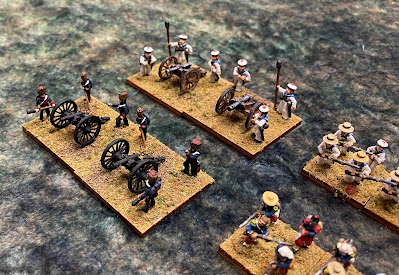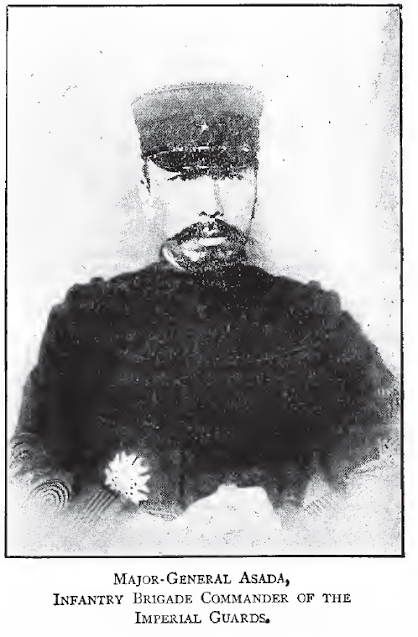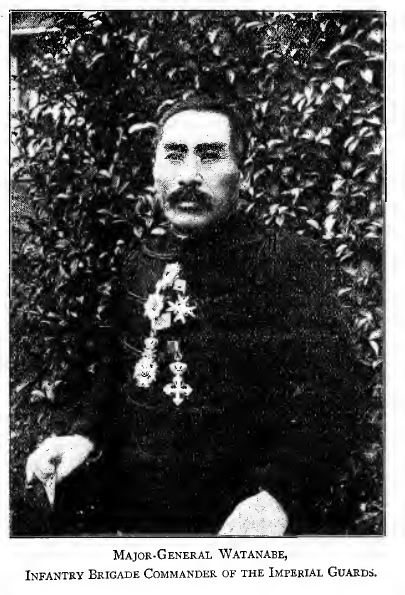The engine of Vauban's Wars, like other Piquet\Field of Battle rules, is the sequence deck. In Vauban's Wars each side will have their own Siege Deck of actions\events that occur during a turn.
Each side has a base deck of 11 cards, with 3 additional Bonus cards added to the deck based on season, leader quality, and nation quality. In the end, each side will have 14 cards in their Siege Deck. If the season, leader quality or national quality doesn't add enough Bonus cards, then the remaining cards are filled with a Siege Drags On card(s) until 14 cards are in the deck.
Here is a table showing all the cards names in Vauban's Wars (section 9 of the rules)
The base Siege Deck cards have a bomb symbol
on them for easy identification. Players can pick any card they like that does not
have a bomb symbol on it as an optional card based on leaders bonus, national bonus, and or season. (“Relief Army Arrives” is an exception as you have to roll that event in order to add that card) Some cards are not
available to both sides per the table above. The Besieger’s deck has a red top stripe
and the Garrison’s deck has a blue top stripe.
The garrison base deck cards with the bomb symbol. These are the custom casino cards that you can purchase to enhance your experience. These cards come with the core rules book too.
I'd like to run through a couple turns of a thought process for both sides during a siege and how that may impact their Siege Deck composition.
Siege Deck Additional Card Options
This is siege pitting the French vs Imperials (Austrians) during the War of the Austrian Succession. The ditch surrounding the fortress is wet and mining and countermining is allowed. Escalade of the fortress walls is not permitted in this scenario. A practical breach will be required.
The Siege is starting in spring, but will change to summer on the second turn. Both sides have average commanders so will not get a leadership card bonus.
The French bonus for the War of the Spanish Succession when their siege-craft was at its peak, is two bonus cards of their choice. Spring doesn't give a card bonus. This means the French commander on turn one will have 2 additional cards of his choice to add to his Siege Deck, and a final card of Siege Drags On.
The Imperial (Austrians) bonus for the War of the Spanish Succession is only one card, while spring doesn't add any free cards. So, the Imperials will round out their additional cards with two Siege Drags On cards.
French Siege Deck Composition Turn 1 (Spring)
The French get two cards of their choice and one Siege Drags On to add to the base Siege Deck of 11 cards. This will give him 14 Siege Deck cards.
The French now need to make a decision on what two cards they should add to their Siege Deck. You will notice many of the cards are already at their maximum level. This leaves Assault, Command Indecision, Leadership, Reload, Sapping & Mining, Siege Drags On, and Siege Move as possible Bonus cards.
Turn one of all siege games is focused on digging, then moving, then reloading. The player here would like to make sure they start digging lots of saps and parallels, so adds one "Sapping & Mining" card to the deck. In addition, they want to make sure they have flexibility around movement so they add a "Siege Move" card. For their last cards they are forced to take a "Siege Drags On" card. Note, you would never take "Command Indecision" cards on purpose! This cards is reserved for abysmal commanders and goes in the deck regardless of any bonuses that you have.
Imperial Siege Deck Composition Turn 1 (Spring)
The Imperial player gets one card of their choice and two Siege Drags On cards to add to the base Siege Deck of 11 cards. This will give him 14 Siege Deck cards.
The Imperial player needs to pick one card from available options. As can be seen the only cards that have not been maxed out are Command Indecision, Leadership, Relief Army Arrives, Reload, Sapping & Mining, Siege Drags On, Siege Move, Sortie, and Trench Raid.

Since the besiegers are in the first parallel (long range), the garrison is not that interest in reload cards at this point in time. Moving around is not critical at this stage either as your garrison forces should be ready and in place to fight. You can't add the "Relief Army Arrives" as that is added to the deck after being rolled via a Unique Event. Leadership (rallying units) is not critical now either. The entire point of the garrison's defense is to make matters difficult for the besieger and delay their advance. The Imperial player takes "Trench Raid" as their optional card as this lets them raid enemy sappers, artillery, and empty stretches of the besiegers siege works to destroy them. The other two cards must be "Siege Drags On" to bring their total to 14 cards.
The players now roll for initiative and flip cards acting on them as they move along. Note, on the first turn the besiegers always win the initiative and must go first. Units that are loaded may fire at any time and don't require a card to fire. Once they have fired they are considered unloaded and need a "Reload" card to fire again.
French Siege Deck Composition Turn 2 (Summer)
As mentioned before, we would move from spring to summer on turn 2. This has the benefit of giving each player one additional card choice. Now the French player has 3 additional cards of their choice! Life is good in the siege works! (At least for the chief engineer). The French just wish the garrison's Trench Raids weren't so effective as he has lost a sapper company and heavy gun section to these raids!
The French player sorts out his base deck (cards with the bomb symbol) and then decides which three additional cards he will add to the deck.
Available Choices: Assault, Command Indecision, Leadership, Reload, Sapping & Mining, Siege Drags On, and Siege Move.
French Choose: Reload, Sapping & Mining, and Siege Move.
As the besieger you will almost always want the extra "Sapping & Mining" card as there is so much siege work to be done by both sappers and miners. The "Reload" card was selected this time as in turn 1 you were able to build saps and some of the 2nd parallel (including a few gun emplacements). Time to move those guns forward and fire at targets of opportunity!
Imperial Siege Deck Composition Turn 2 (Summer)
With summer upon the siege, the Imperials now have 2 additional choices and one required Siege Drags On card. We have hard decisions as the besieger gets closer and closer.
Available Choices: Command Indecision, Leadership, Relief Army Arrives, Reload, Sapping & Mining, Siege Drags On, Siege Move, Sortie, and Trench Raid.
Imperial Choose: Reload, Siege Drags On, and Trench Raid.
Since the besieger hasn't opened a mine yet, we are not going to take an additional "Sapping & Mining" card. Trench Raids are still great options during the first 3-4 turns, so we are taking that one. Lastly, the besieger is getting closer making effect fire from your fortress guns more of a critical option. Let's take the extra "Reload" card!
Once again the decks are shuffled and initiative is rolled. Winner chooses who acts on the initiative first.
Moving the siege we are now at TURN 6
...
French Siege Deck Composition Turn 6 (Summer)
The third parallel was established a week ago and effect artillery and mortar fire has cleared the garrison's glacis! A mine was started and working towards the King's Bastion. The French player wants to keep his forces focused on the breaching target of the King's Bastion. Still has three choices
Available Choices: Assault, Command Indecision, Leadership, Reload, Sapping & Mining, Siege Drags On, and Siege Move.
French Choose: Reload, Sapping & Mining, and Siege Move.
Imperial Siege Deck Composition Turn 6 (Summer)
Imperial commanders still has two choices with one required Siege Drags On card.
Available Choices: Command Indecision, Leadership, Relief Army Arrives, Reload, Sapping & Mining, Siege Drags On, Siege Move, Sortie, and Trench Raid.
Because the enemy mine is getting closer (need to countermine) and fires are starting to spread in the town due to incendiary mortar rounds, the garrison picks Sapping & Mining. Trench raids are beyond dangerous now and heavy fire is the only way to prevent an assault. He picks "Reload".
Imperial Choose: Reload, Sapping & Mining, and Siege Drags On.
The decks are shuffled and initiative is rolled. Winner chooses who acts on the initiative first. During the turn Imperial countermining efforts are for naught and the French detonate a mine under the King's Bastion, causing terrific damage, while breaching batteries finish off the bastion causing a practical breach! Imperials are hoping for a Relief Army Arrives event! Maybe the garrison should just surrender or launch their own major Sortie?!
French Siege Deck Composition Turn 7 (Summer)
We are now into the fourth week of the siege and the French are making great progress. Breaching batteries have been placed the enemy glacis and have cleared large sections of the curtain walls. Assault forces have been moved to the third parallel and we have a breach in the King's Bastion! Our spies tell us that enemy morale is at a breaking point.
Available Choices: Assault, Command Indecision, Leadership, Reload, Sapping & Mining, Siege Drags On, and Siege Move.
French Choose: Assault, Leadership, Reload
Reload to keep up constant fire across the curtain walls and other bastions. Leadership to rally as many forces as possible before the assault and Assault as we are ready to storm the fortress.
Imperial Siege Deck Composition Turn 7 (Summer)
Still have two additional choices and the Siege Drags On card to add to the Imperial deck. However, things are looking bad for the garrison. A practical breach has occurred on the King's Bastion, and an assault is likely in the near future. Popular support has become a problem, while fires are spreading in the town.
Available Choices: Command Indecision, Leadership, Relief Army Arrives, Reload, Sapping & Mining, Siege Drags On, Siege Move, Sortie, and Trench Raid.
Imperial Choose: Reload, Sapping & Mining, and Sortie.
Imperial player knows this is the last gasp. He has fought with honor, but he needs to hold out one more week according to his orders. The only way he sees this happening if he delays the enemy with a major Sortie. He picks the Sortie card hoping to have that pop up before the besieger draws their Assault card (if it is in their deck). He picks reload too as he wants to make this a contested fight. Sapping & Mining would have helped with retrenchments, but he will just rely on the existing Sapping & Mining card in his deck.
Once again the decks are shuffled and initiative is rolled. Winner chooses who acts on the initiative first. The Besieger wins by 5 (initiative points), and elects to go first, hoping they turn the Assault card. On the fourth initiative the Assault card is drawn!
You now switch to your favorite tactical ruleset to fight the assault. Most sieges were successful without an assault. A full assault should be a last resort.
I hope you find this helpful in understanding the Siege Deck composition for Vauban's Wars.
Note that different wars and participants will have different types of additional card options. Some have none because their corps of engineers is just inept.
Cheers!
Eric





























































